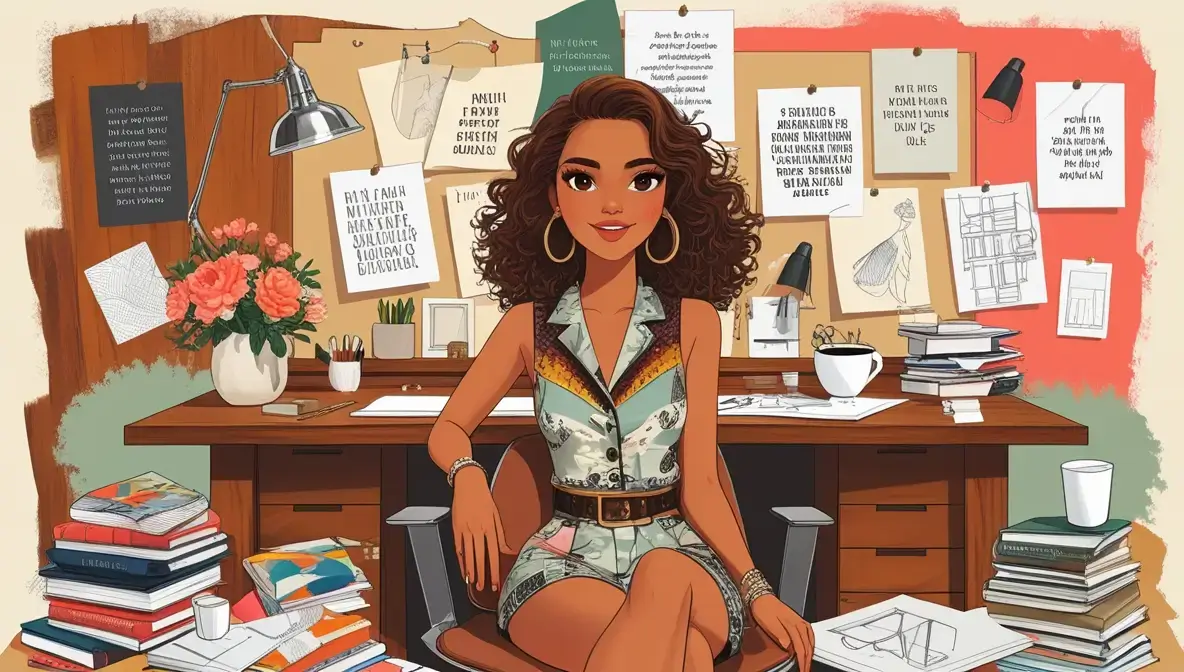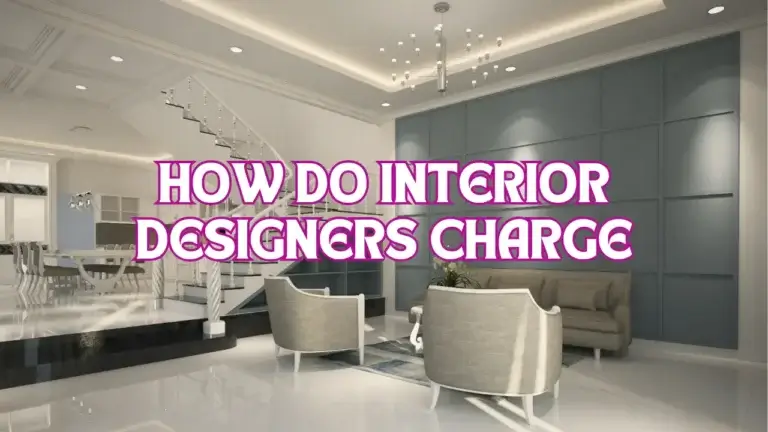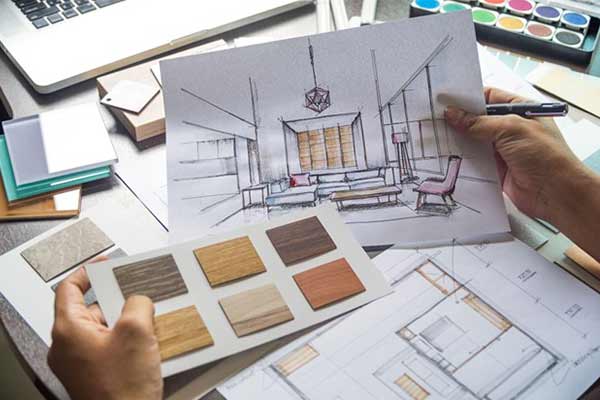Being an interior designer involves creativity and problem-solving daily. Your day is never the same, filled with a mix of tasks and interactions.
What is Your Day Like to Be an Interior Designer? An interior designer’s day starts with a cup of coffee and a look at the to-do list. Meetings with clients and site visits are common. You might spend time selecting fabrics, colors, and furniture. Sketching designs and working on blueprints could take a good chunk of your day.
Communication with contractors and suppliers is essential to keep projects on track. You often need to balance artistic vision with practical needs and budgets. Each day brings new challenges and opportunities to create beautiful, functional spaces. It’s a job that requires both an eye for detail and a big-picture mindset.
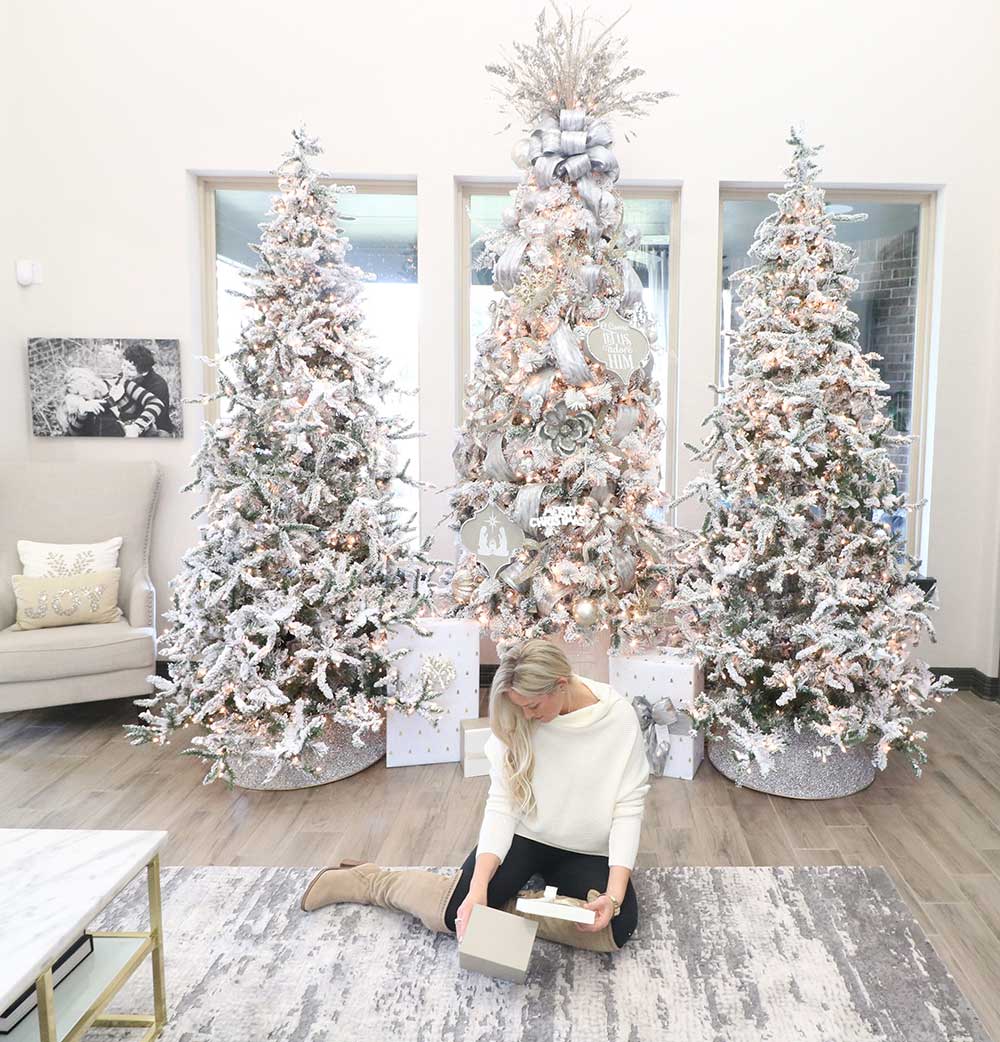
Credit: www.melissarobertsinteriors.com
A Day in the Life of an Interior Designer
Interior designers have dynamic and organized daily routines with a mix of creativity, coordination, and dealing with clients. From morning planning to site visiting and consultation with clients, each activity is important for a successful journey of design.
Daily Morning Routine: Productivity at its Best
Beginning with Coffee & Emails – Warm coffee in hands begins the morning, energizes, and sharpens minds. First, comes checking and replying to clients’, vendors’, and suppliers’ emails for effective communications.
Going through the To-Do List – Designers go through their daily schedule, prioritize, and book meetings, site visiting, and deadlines. Having a planned schedule keeps projects moving and no critical activity out of mind.
Fixing Appointments & Site Visits – Meetings with clients, vendors, and contractors are booked. Site visiting is planned to monitor work and settle any issue during the journey of design.
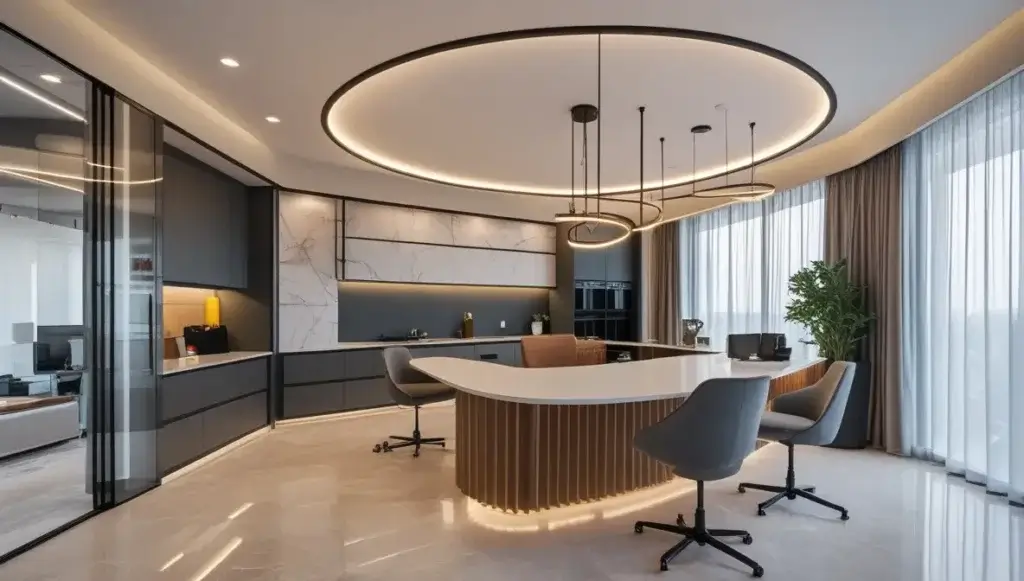
Client Consultation: What Clients Need
Client consultation is an integral part of an interior designer’s life. Client consultation sets a direction for a project through gathering information about likings, expectation, and budget of clients.
First Meetings: Idea Gathering
Meeting with Clients – Every journey begins with a thorough discussion. Clients introduce their vision, likings, colors, and functional requirements.
The Correct Questions – Designers ask in detail:
- What kind of atmosphere will they have?
- What must-haves in terms of a design?
- How much budget and timeline?
Taking Notes & Inspirations – Designers take notes, sketches, and ref photos to form an apt concept in order to transition to the next stage of design.
Understanding Client Needs: Personalized Design
- Style & Functionality – Clients have specific requirements, in terms of modern minimalism, nostalgic character, or luxurious looks. Balance between form and function must be achieved by the designer.
- Cost Planning – Keeping the project in budget but not compromising on its quality is paramount. Identification of cost-effective options and high standards of design must be kept in mind, and one must develop a skill for it for a designer.
- Optimizing Space – Familiarity with the size, lights, and lay out of the room helps in effective decision-making in terms of its design.
- Regular Communication – Frequent follow-ups and communications make clients in the loop and involved and make them happy with the whole design exercise.
The Final Thoughts
Interior designers balance several jobs a day, including meetings with clients and planning, coordination with providers, and site inspections. Having a proper morning routine, effective communication, and planning helps in becoming a successful interior designer. With an awareness of client requirements and organization, a designer creates spaces that not only function but look fabulous too!
Smoothen your interior design practice? Give AI-powered software such as Coohom, Planner 5D, and Homestyler a try and visualize your designs with ease!
Design Concept Development: Bringing Ideas to Life
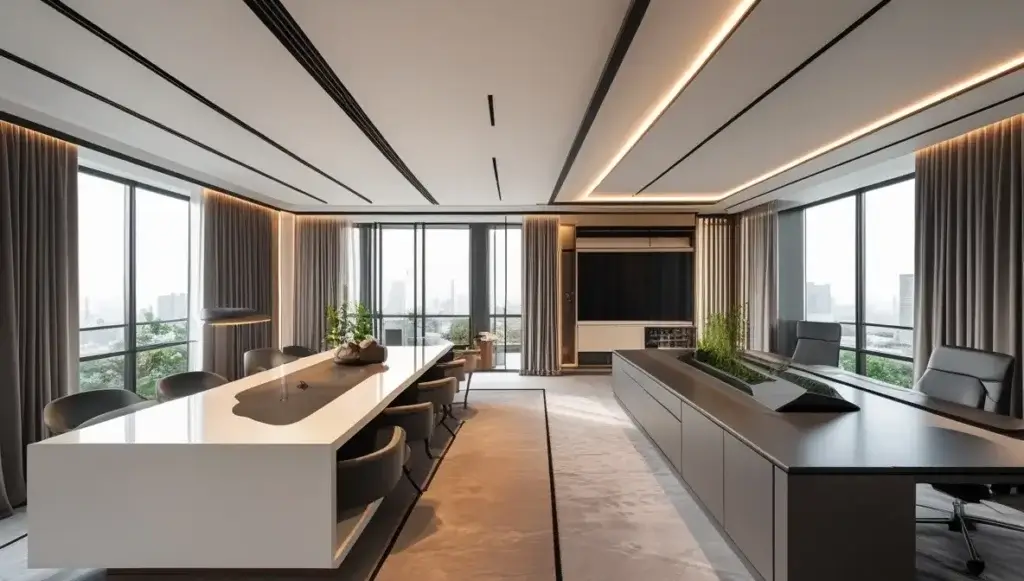
Design takes off with a creative vision. All work involves careful planning, inquiry, and visualization in an attempt to make finished work pleasing and functional.
Inspiration & Brainstorming
Idea Gathering – Inspiration comes to designers through magazines, websites, artwork, buildings, and even Mother Nature. As each work is one of a kind, they experiment with several types, textures, and colors to form a personalized theme.
Client Idea Sessions – Before a concept turns into reality, designers speak with the client in an attempt to learn about their life, requirements, and preferred style. It helps form a work that feels both sensational and functional.
Researching Materials & Textures – Designers work through factors such as:
- Color schemes that evoke moods
- Material such as wood, glass, and metal for an impact desired
- Fabrics & textures for comfort and coziness
Mood Boards: Realising the Idea
Designing Mood Boards – After inspirations have been collected, a designer creates a mood board—a graphical depiction of the concept. It entails:
- Designs and decor photographs
- Color samples for walls and upholstery
- Textile samples such as wood, cloth, and tile
What Makes Mood Boards Necessary?
- It allows for visualization of completed work by the client
- It works as a creative blueprint for the entire work
- It keeps the design uniform and in harmony with the initial idea
Site Visits: Observing Space
Visiting the Site – Interior designers first assess the site in person. That tells them about its layout, lighting, and structure.
Analyzing Natural & Artificial Lighting – Lighting is an important consideration in planning. Designers review how natural sunlight enters and illuminates and where artificial lights will have to go for best atmosphere.
Identifying Challenges – Some spaces have architectural restrictions, outdated fixtures, and circulation concerns. A site tour tells designers about creative workarounds in initial planning.
Measuring the Space: Precision in Planning
Accurate Measurement – Designers make each detail, including:
- The room dimensions for planning for furniture arrangement
- The doors and windows for choosing curtains
- The ceiling height for choosing lights and decor
Why Measuring?
- Eliminates purchasing un-fitting furniture
- Guarantees effective use of space
- Enables custom-designed furniture and cabinetry
Streamline your interior design practice?
Material Choice: Comfort, Style, and Durability
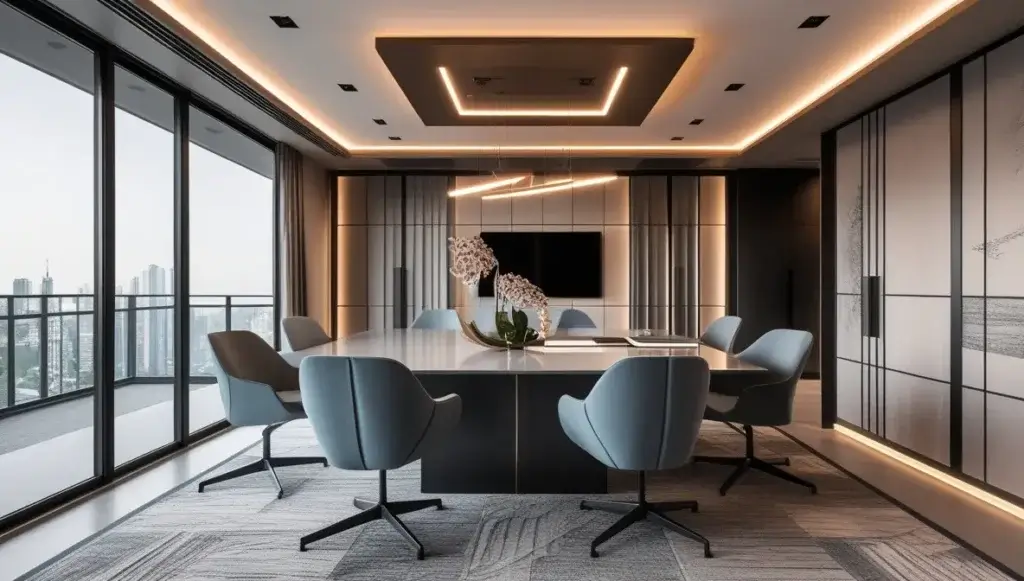
The use of proper materials in your living room is a key to creating a harmonious and pleasing environment. From fabrics to furniture, all such minute factors contribute to an atmosphere in a room, its comfort, and durability. Cautious selection of materials not only brings beauty but long-term usability too.
Fabrics: Mood Setting with Texture, Durability, and Style
Fabrics contribute a long distance towards a room’s atmosphere. Correct selection can make a room cozy, sophisticated, or welcoming, but incorrect ones can make a room uncomfortable, high-maintenance, etc. Refer to these factors when selecting fabrics for upholstery, curtains, etc., for use:
- Texturing and Comfortability: How a cloth feels can mold a room’s atmosphere. Silky and soft textures such as velvet or chenille give a luxurious atmosphere, but cotton and linen impart a casual and breathable atmosphere.
- Durability and Maintenability: Certain materials have high durability and can resist high use, such as in high-use spaces. Microfiber, leather, and synthetics with closely textured threads work best for family use with kids and animals, with durability and ease in maintenance. Sensitive ones such as silk or suede, for all beauty, demand careful use and expert washing.
- Pattern and Color: With fabrics, one can indulge in freedom with colors and prints. Bright colors and bold prints can revitalize a room, and monotonous colors impart sophisticated and ageless beauty. Match selection of fabrics with current decor for uniformity in design.
Furniture: Where Form and Functionality Converge
Furniture is not an ornament – it informs a room of its purpose. Wise selection will make a room useful, handsome, and comfortable. Look for these when selecting:
- Use and Comfort: How a room will function will inform its furnishing requirements. In a living room, a sofa and armchairs must permit one to sit and enjoy, and dinette chairs must permit comfort during a lengthy meal. In working areas, a desk and chairs must permit productivity with ease.
- Size and Space Planning: Dimensions of a room must harmonize with that of its furnishing items. Overwhelming items will overwhelm a room, and dollhouse items in a grand room will become unimportant. Planning with care in terms of dimensions and location will yield a balanced, expansive atmosphere.
- Statement and Functional Pieces: There will be furnishing items that have a focal purpose, such as an ornamented coffee table, a luxurious chaise lounge, or an outlandish bookshelf. Others must have a function first, such as a utility closet, a utility room, or multi-use chairs. Having a balanced selection of both will make a room handsome and useful.
The Skill of Choosing Materials for Home Decorating
The selection of materials is a part in creating a personality-infused environment that will function for use in life at work and at leisure. For selecting soft furnishing for a cozy environment, for long-term use furnishing, each must serve a desired style and living style. By selecting with care in terms of texture, durability, hue, and proportion, a residence can become cozy and useful at one and the same time. Cautious selection of materials will make your interior both sophisticated, comfortable, and perfect for your use for many years to come.
Streamline your interior design practice?

Credit: www.youtube.com
Team Collaborations
Interior designers often work closely with contractors. This ensures that ideas turn into reality. Designers share plans and ideas. Contractors make sure they are built correctly. Clear communication is key. Both parties must understand each other well. This helps avoid mistakes. It keeps projects on track. It also ensures that clients are happy.
Suppliers provide the materials needed for a project. Interior designers need to coordinate with them. This means ordering the right items. It also means making sure they arrive on time. Delays can cause problems. So, designers keep in touch with suppliers. They check on orders often. Good relationships with suppliers are important. This can make projects run smoother.
Project Management
An interior designer’s day involves many tasks. One of them is tracking progress. This means checking if work is on schedule. It is important to visit the site often. This helps to see how things are going. You need to talk with the workers. Ask them about any problems. Take notes on what is done and what is left. This helps to keep the project on track. It also helps to make changes if needed. Good tracking can save time and money.
Interior designers also need to handle budgets. This means knowing how much money is spent. It is important to plan well. You need to know the cost of materials and labor. Compare prices before buying. Keep all receipts and bills. Make sure to stay within the budget. If costs go up, find ways to save. Talk to clients about any changes. This keeps everyone happy and the project running smoothly.
Evening Wrap-up
Every evening, an interior designer reviews the day’s work. They check the progress of their projects. This helps in understanding what was done and what is left. Designers also look at their notes and make sure everything is on track. They might talk to their team to gather feedback.
Planning for the next day is crucial. Designers make a to-do list. They check their calendar for meetings. This helps them stay organized and ready for the tasks ahead. Preparation also involves gathering materials needed for the next day’s work. Being prepared makes the next day smoother and more productive.
Frequently Asked Questions
What Does An Interior Designer Do Daily?
An interior designer plans spaces, selects furniture, and chooses color schemes. They also meet clients and coordinate projects.
How Do Interior Designers Start Their Day?
They often start by checking emails and messages. Then, they review their daily schedule and set priorities.
What Challenges Do Interior Designers Face?
They face tight deadlines, budget constraints, and client expectations. They also need to stay updated with trends.
How Do Interior Designers Stay Creative?
They find inspiration in magazines, online platforms, and nature. They also attend design events and workshops.
Conclusion
Being an interior designer is both challenging and rewarding. Each day brings new tasks. Creativity and problem-solving are key. Meeting clients, planning spaces, and choosing materials keep the job exciting. Deadlines and budgets add pressure, yet they also drive success.
Collaboration with other professionals is essential. Passion for design makes every effort worthwhile. If you love transforming spaces, this career is for you. Embrace the diversity and thrive in the dynamic environment.

My name is Mahi Uddin, and I’m a blog writer with over two years of experience specializing in creating engaging, informative content using AI tools. I contribute to InExDecor.com, where I share creative ideas and practical tips for transforming interior and exterior spaces into beautiful, functional environments. With a passion for storytelling and a knack for blending creativity with technology, I strive to craft blogs that not only inform but also inspire readers. When I’m not writing, you can find me exploring design trends or enjoying a good book with a cup of coffee.

